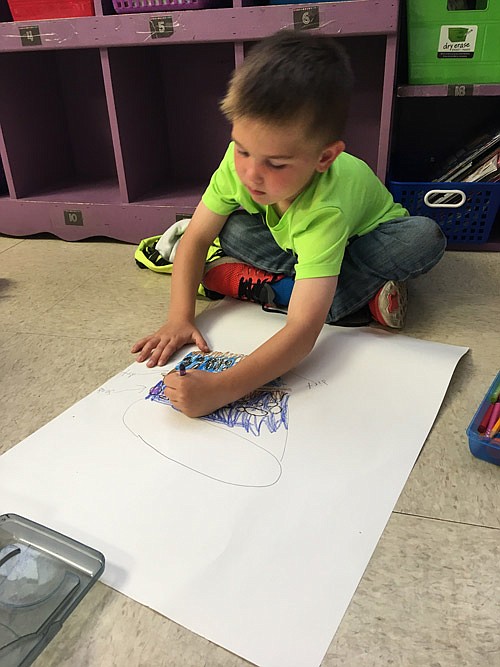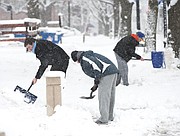Standards and serious learning are still in play during summer school at California Elementary School.
"In summer school, we can do different things, pull in units we want to focus on," said third-grade teacher Kala Barnard. "(But) we're not playing. We're here and we're working and learning."
With 318 students enrolled, this is the largest summer school session in 10 years, said Principal Gary Baker.
Third graders are getting a jump start on the newly-assigned Missouri History emphasis, previously set at the fourth grade level. And first graders are applying critical thinking in a STEM (Science Technology Engineering Math) project.
Using leftover grass seed from her own home and pots donated from Longfellow's Garden Center, Centertown, Danielle Morrow is providing the opportunity for her incoming first-graders to brainstorm what they know, research and design a plan to grow grass.
"STEM is a big push," Morrow said. "We let them be little researchers and little scientists."
The exercise not only will tap into the science subject, students will journal daily to record growth measurements and draw pictures, if they'd like.
Instead of giving traditional step-by-step instructions, Morrow said she is giving the students the materials and letting them develop their own plans and evaluate their own successes or things to adjust.
"It gets them asking questions," she said. "They're no longer being fed the information, they're discoverying it."
In Kala Barnard and Reba Leonard's third-grade classrooms, students are discoverying history.
Tapping into the Laura Ingalls Wilder "Little House" literature, the teachers are able to emphasize reading strategies while also exposing students to Missouri history and western expansion.
"Wilder was a great visual author," Barnard said. "Her word choice helps so kids can create images in their minds."
The classroom conversations include pioneer food, clothing, toys and homes.
"They're excited to learn about a time period they know nothing about," Barnard said.


